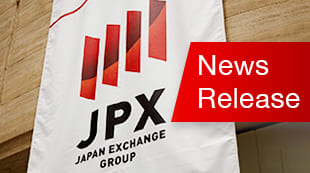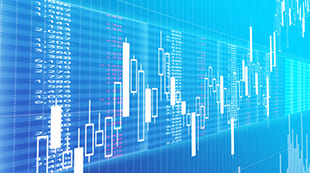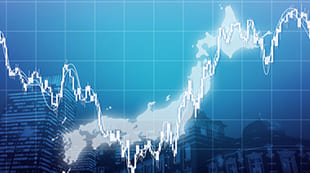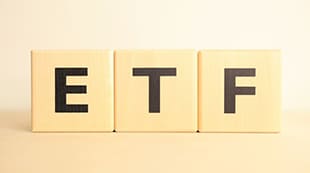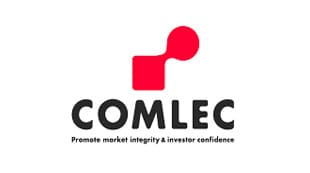Search results 861-870 / 10648
- sort:
- relevance
- latest

Overview (Infrastructure Funds) | Japan Exchange Group Infrastructure Fund Market Structure of infrastructure funds Tokyo Stock Exchange (TSE) established an infrastructure fund market on April 30, 2015 for listing funds that invest in infrastructure assets including renewable energy facilities, power grids, and transport and transmission networks. In recent years, due to a combination of a harsh fiscal climate and an urgent need for maintenance and repair of existing infrastructure and new construction projects, there are increasing calls to tap into private sector funds and know-how for infrastructure development and management. In addition, infrastructure investments are viewed as a stable asset class that is not easily affected by economic trends and drawing interest as a means to safely diversify investment portfolios. Considering the social significance of infrastructure development and the increasing demand for infrastructure investments, TSE developed the necessary rules and launched the infrastructure fund market to address the needs for ...

Overview | Azuki (Red Bean) Futures | Japan Exchange Group About Azuki (Red Bean) Futures Overview Contract Specifications Red beans (Azuki) are generally grown in warm and humid climates and considered to be vulnerable to cold and drought, but they can also be grown in mountainous areas and newly cultivated lands. In addition, crop rotation in a cycle of 3 to 4 years is recommended for red beans since they are not suitable for continuous cropping. Thus, Hokkaido, blessed with vast land, is ideal for the production red beans, as well as other beans. In Hokkaido, red beans were grown primarily in the Matsumae region, but as the cultivation progressed, the production area gradually expanded to the center of Hokkaido and to the Tokachi region. This contributed to the increase in the acreage and brought the shift from self-sufficient production to production as commodities. The weather conditions during the growing and ...

Overview | Corn Futures | Japan Exchange Group About Corn Futures Overview Contract Specifications Almost all corn consumed in Japan is imported from foreign countries, mainly from the US. About 70% of the corn is consumed as feed and the rest is consumed as food. As for feed, 80% is used as raw material for compound feed for pigs, dairy cows, beef cattle, and poultry. As for food,70% is processed into corn starch used for saccharification of glucose, starch syrup and isomerized sugar, or fiber, paper paste, and other food ingredients. The remaining 30% is processed into grit which is used as fermentation raw material for distilled liquor and beer. It is also used as a raw material for confectioneries such as corn flakes and popcorn, or miso. Corn prices are heavily influenced by the yield from the Corn Belt, a major production area in the US. Attention must be paid ...

Overview | Soybean Futures | Japan Exchange Group About Soybean Futures Overview Contract Specifications Soybeans have been cultivated from the ancient time in Japan. Japan has long history of processing soybeans to consume as food, and it is said that the popularization of tea ceremony kaiseki during the Momoyama era triggered the spread of soybeans to ordinary people. At present, soybean-based miso, natto, soy sauce, and tofu, etc. are indispensable to our dietary habits. It can be said that the wisdom of the Japanese ancestors has contributed to today’s Japanese cuisine. Soy is often called "meat of the field", because it is highly nutritious, containing proteins, fats, carbohydrates, ash, minerals, and vitamins. Soy is essential food for the structure and function of human body cells and in recent years, as the importance of vegetable protein has been recognized, soybean foods have attracted attention worldwide. Soybean prices are heavily influenced by ...

Overview | DJIA Futures | Japan Exchange Group About DJIA Futures Overview Contract Specifications DJIA Futures are futures contracts based on Dow Jones Industrial AverageSM, which is a modified stock average index of 30 issues selected by CME Group Index Services LLC ("CME Indexes"), and is calculated by the CME Indexes. Note regarding Trading DJIA Futures are based on the same underlying index as the DJIA futures traded on the Board of Trade of the City of Chicago, Inc. (CBOT). However, since the base currency for the futures is different, the two contracts are not necessarily traded at the same price. Copyrights/Disclaimer Copyrights/Disclaimer Related Site Dow Jones Averages...

Overview | FTSE China 50 Index Futures | Japan Exchange Group About FTSE China 50 Index Futures Overview Contract Specifications New futures on FTSE China 50 Index of Chinese stocks listed in Hong Kong offer a means of hedging exposure to China through the territory. FTSE China 50 Index The FTSE China 50 Index is administered by FTSE International Limited and it is composed of 50 H shares, red chips, and P chips selected based on market value and liquidity from among Chinese stocks listed on the Stock Exchange of Hong Kong. Categories of Chinese Stocks Outline A Shares Shares of companies incorporated in Mainland China, listed in Mainland China, and traded in Renminbi (Restrictions on investment apply for foreign investors) B Shares Shares of companies incorporated in Mainland China, listed in Mainland China, and traded in foreign currencies (i.e., USD on Shanghai Stock Exchange and HKD on Shenzhen Stock Exchange)...

Overview | TAIEX Futures | Japan Exchange Group About TAIEX Futures Overview Contract Specifications New futures on TWSE Capitalization Weighted Stock Index (TAIEX), the leading index for the Taiwan stock market. TAIEX TAIEX, which is calculated by Taiwan Stock Exchange Corporation (TWSE), is a benchmark of the Taiwan equity market and a market capitalization weighted index composed of all the ordinary stocks listed on TWSE. TAIEX Fact sheet(As of end of September, 2016) Market Maker Program From the viewpoint of ensuring the smooth trading opportunity, Market Maker Program is applied to TAIEX Futures Market Maker Program...

Delisted Issues (Infrastructure Funds) | Japan Exchange Group List of Delisted As a general rule, investment corporations that are to be delisted without designation as Securities to Be Delisted due to an absorption-type merger with another listed investment corporation will be included in this list two weeks prior to the delisting date. For other delistings, issues will be included on the business day after the delisting is decided. Date of Delisting Code Issue Name Reason for Delisting Jan. 17, 2023 9281 Takara Leben Infrastructure Fund, Inc. Reverse investment unit split Aug. 22, 2022 9283 Renewable Japan Energy Infrastructure Fund, Inc. Reverse investment unit split...

Criteria for Listing | Listing (Infrastructure Funds) | Japan Exchange Group Attributes of the Management Company, etc. Details of Assets Under Management, etc. Financial Details Infrastructure Fund Ownership Conditions Management System and Structure, etc. Terms and Conditions Other Criteria for Listing Delisting In order for an infrastructure fund to be listed on the Tokyo Stock Exchange, it must conform to the listing examination standards stipulated in the "Securities Listing Regulations" with regard to the details of the issuance of the infrastructure fund and other matters. The criteria include standards related to the ratio of the amount of infrastructure assets to the total amount of assets under management, standards related to the ratio of the total amount of infrastructure assets, infrastructure-related securities, and liquid assets to the total amount of assets under management, standards related to the total amount of assets, and formal requirements such as formulating a basic policy for the ...

Investment Risk (Infrastructure Funds) | Japan Exchange Group Schemes Related to Renewable Energy Risks Related to the Feed-In Tariff (FIT) Scheme Risks Related to the Feed-in Premium (FIP) Scheme Risks Associated with Corporate PPAs Risks Related to Asset Characteristics Characteristics of Renewable Energy Generation Facilities Risks Related to Conduit Status for Tax Purposes The infrastructure funds listed as of the end of August 2022 are all funds that invest in renewable energy generation facilities, primarily solar power generation facilities. Below is an explanation of investment risks specific to such infrastructure funds that should be particularly noted. Please note that the following information is based on laws, regulations, and other rules as of the end of August 2022, and may be subject to change due to subsequent amendments to laws, regulations, and other rules. When investing in individual infrastructure funds, please do so at your own risk after confirming the ...

